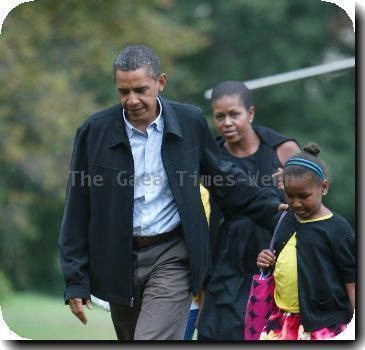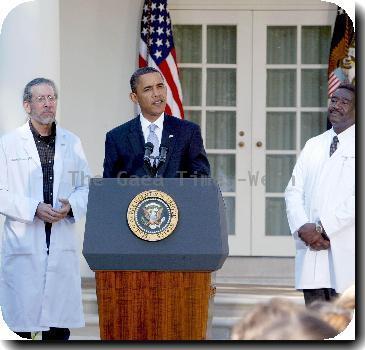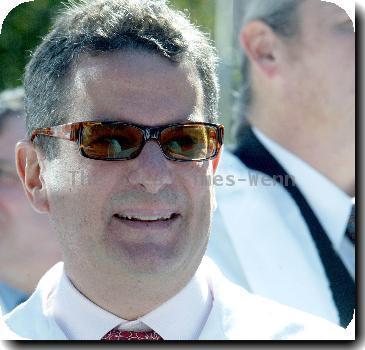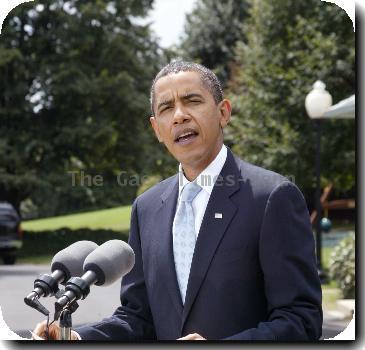Obama’s 2011 withdrawal date relies on troubled US-NATO efforts to build Afghan forces
By Robert Burns, APThursday, December 3, 2009
Afghan training mission faces tough obstacles
WASHINGTON — America’s eight-year effort to build a functional Afghan security force has been a study in slow motion, raising doubts about President Barack Obama’s new plan to quickly get the nation’s army and police in shape so U.S. forces can begin to leave in 18 months.
A lack of competence, resources and confidence have hampered Afghanistan’s army and police, as have illiteracy and corruption. Those continuing obstacles provoked skepticism from Congress this week about whether the U.S. military can train the Afghans quickly and effectively enough to begin to replace American forces by Obama’s proposed exit start date of July 2011.
“It seems to me that the large influx of U.S. combat troops will put more U.S. Marines on street corners in Afghan villages, with too few Afghan partners alongside them,” Senate Armed Services Committee Chairman Sen. Carl Levin, D-Mich., said at one hearing.
The untested Afghan force is the linchpin in Obama’s twinned surge and exit strategy. It would have to grow and improve rapidly to take up the fight against the Taliban as the Americans start to leave.
In announcing his reworked approach to the war Tuesday, Obama said the 30,000 extra U.S. troops and a smaller contingent of new allied forces “will increase our ability to train competent Afghan security forces and to partner with them so that more Afghans can get into the fight.”
The theory is that Afghan soldiers can be sufficiently motivated to defeat insurgent groups, including the Taliban, if given the proper resources. But, as in Iraq at the height of its insurgency in 2006-07, instilling basic competence is an easier task than forging a sense of national purpose.
As in Iraq, there is a risk of rushing the transfer of security responsibility from U.S. and NATO forces to the Afghans. The tide turned there after President George W. Bush decided that the handoff to Iraqis was failing, and sent extra U.S. combat troops to step up the fight in early 2007. That bought more time for the Iraqi forces to prepare to stand on their own.
With 30,000 American troops now bound for Afghanistan, U.S. and NATO officers plan to push more Afghan recruits through the training pipeline over the critical next 18 months while also trying to increase their staying power and professionalism on the battlefield.
The key to improving their performance, often spotty in the past, will be pairing newly trained Afghan combat units with U.S. and NATO units, said the top U.S. military official in charge of the training operation.
“That partnering is absolutely essential and we’re putting a lot of emphasis on that,” said Lt. Gen. William B. Caldwell, who recently arrived in Afghanistan as the new head of the training mission.
Defense Secretary Robert Gates made a similar point Wednesday in defending the new approach during testimony on Capitol Hill. He said the U.S. military saw in Iraq that partnering with local troops gave them confidence, which led to improved performance.
Nearly a brigade-sized complement of U.S. trainers — between 3,000 and 4,000 — is expected to be part of the new influx of forces. Administration officials said that the rest of the combat troops will also play a role in training or mentoring.
Caldwell’s first task is to increase the size of the Afghan national army to 134,000 troops by Oct. 31 next year. Today it stands at about 97,000, according to Lt. Col. David Hylton, a U.S. spokesman in Kabul. The Afghan police force of 94,000 is also pegged to rise by nearly 3,000 officers.
But those numbers will not be sufficient to replace U.S. forces. Adm. Mike Mullen, chairman of the Joint Chiefs of Staff, told a congressional panel Wednesday that the administration aims for 170,000 Afghan soldiers by the July 2011 start of the U.S. exit.
Overall U.S. commander Gen. Stanley McChrystal set a goal of 400,000 Afghan forces by 2013 in his review of the war strategy. But that high goal is being reconsidered by Pentagon officials. A skeptical Rep. Jane Harman, D-Calif., said Tuesday that she believes the numbers will fall well short.
“My two visits to the region this year persuade me that less than half this number is achievable,” Harman said. “This means that any ‘exit’ based on a trained Afghan force is years or decades away.”
Caldwell insists he is building on a solid foundation, but he acknowledges progress has been slow in a country torn by wars.
“They had warlord-type armies around the country but there wasn’t a national army,” Caldwell said in a telephone interview from Kabul. “So we really have been growing this from the ground up.”
Trainers are still in short supply, and it remains to be seen whether allies will provide more on top of the infusion of American help. NATO has promised at least 5,000 new troops, and talks to be held in Brussels in coming days are likely to give an early indication of how many will be trainers.
Building a competent Afghan army begins with Caldwell, who took on the job after a stint as commander of the U.S. Army’s Combined Armed Center at Ft. Leavenworth, Kan. He previously spent a year in Iraq as chief spokesman for the U.S. military command.
Among the officials Caldwell consulted before beginning his new assignment was James Dubik, a retired three-star Army general who headed training of Iraqi forces during the “surge” of U.S. troops.
Dubik said the idea is to build on the Afghans’ basic training by having them operate under battlefield conditions with veteran U.S. forces.
“If you just crank out numbers and send them immediately into the battlespace,” he said, “you end up with units that are inproficient and unconfident in themselves.”
Tags: Afghanistan, Asia, Barack Obama, Central Asia, Demographic Groups, Iraq, Kabul, Middle East, North America, United States, Veterans, Washington



